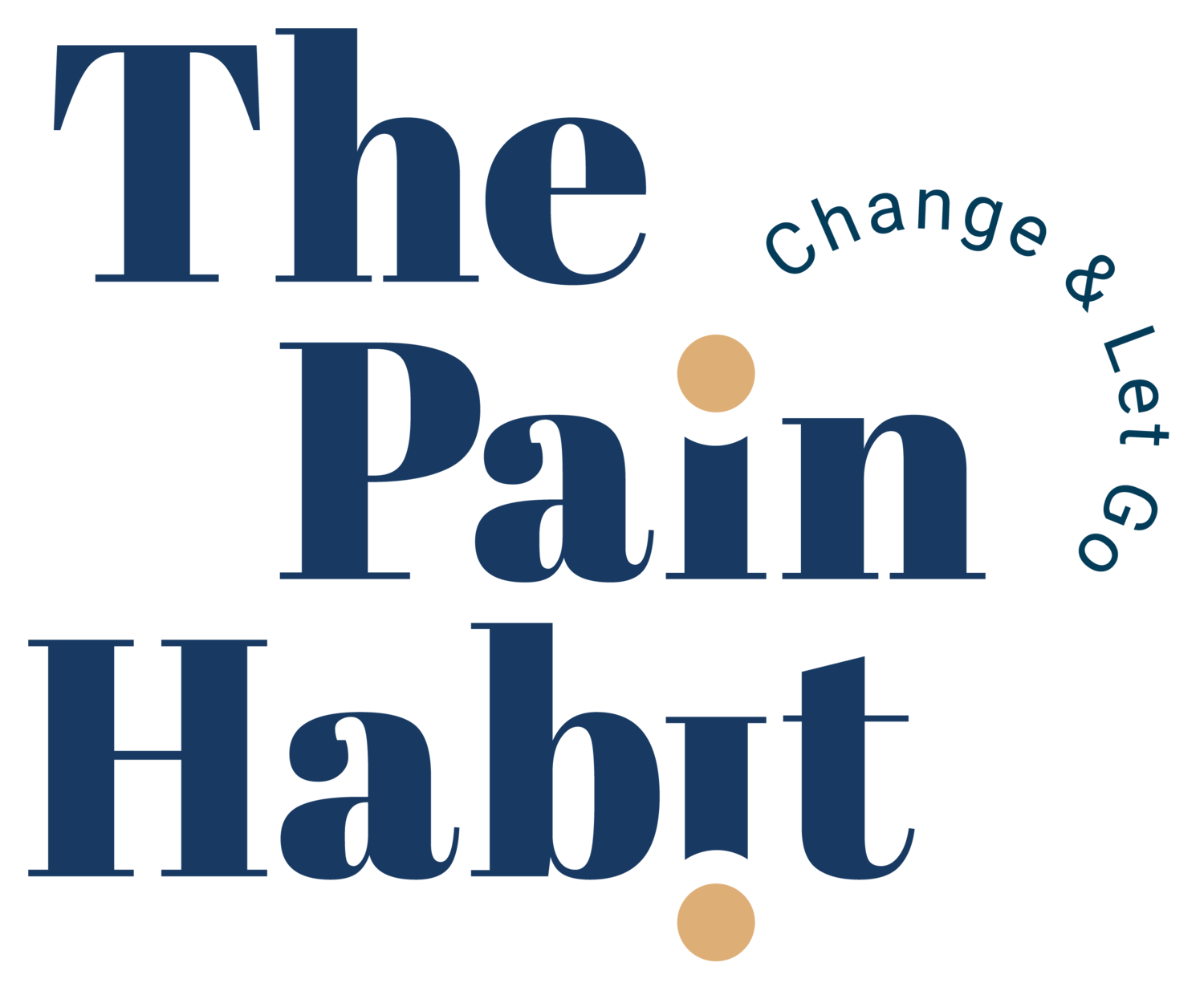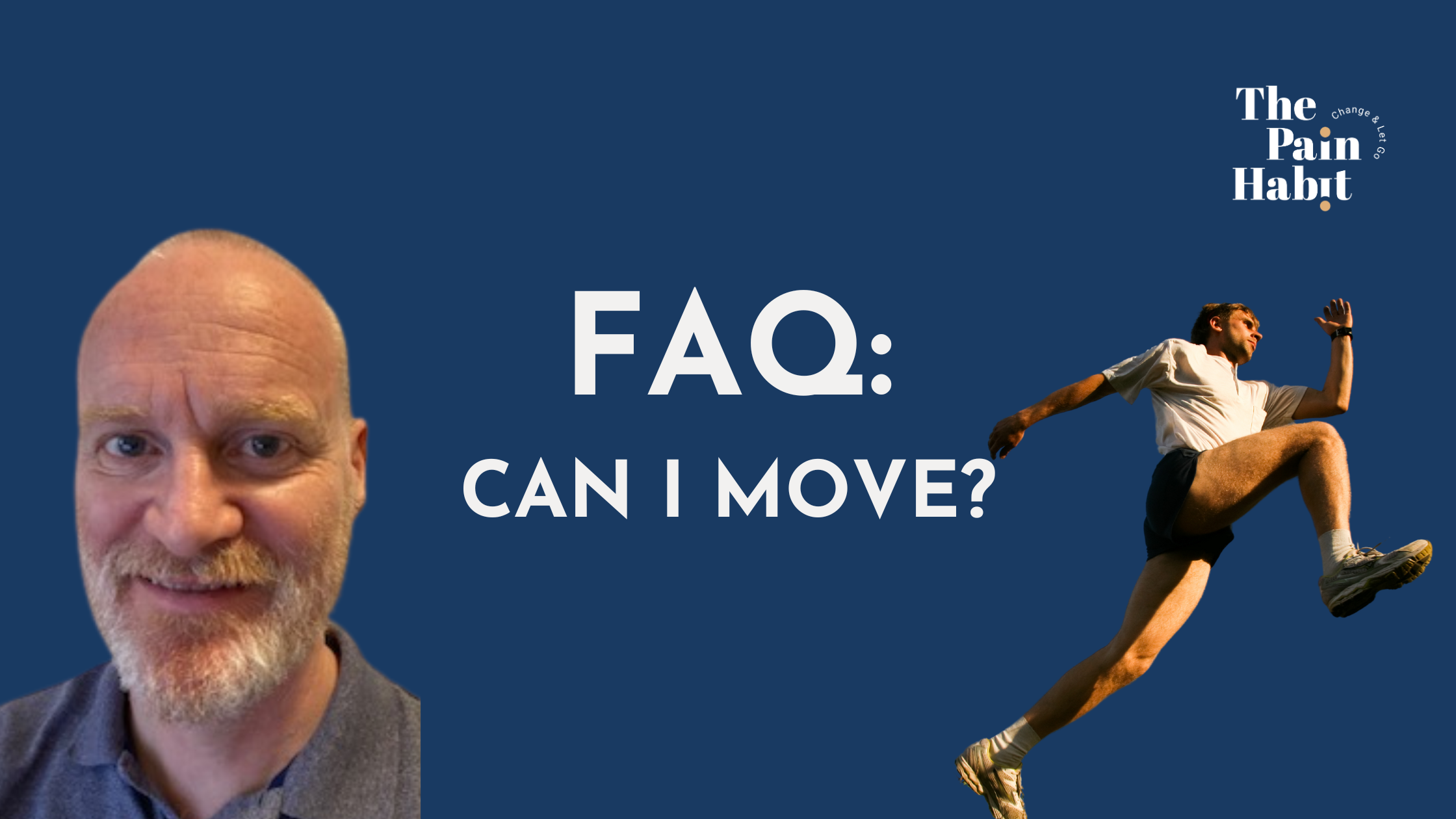FAQ: Can I Move?
Am I OK To Start Moving?
Here’s an example of a frequently asked question about restarting movement when pain is still or has been strongly associated with that movement.
With persistent pain, an understandable but irrational fear can develop, as well as a predictable frustration in the person who has difficulty accessing what should be enjoyable, fun and healthy stress-relieving activities involving movement.
Returning to those activities is achievable but must be approached through a calm, conscious filter of rational safety.
The Patient’s Question
I love swimming; it used to help me mentally and physically. Now, it sets off my leg pain. I'm stressed about going swimming if I get stressed about it causing pain. So can I go swimming, and if it sets the pain off, should I take the attitude that it has been good for me and keep calm?
My Response
If the anticipation of swimming triggers fear, then you have to rationalise that fear.
Something like, ‘At the moment, my body doesn't like that activity because it thinks it is overloading. I know it is safe, and it's something I enjoy’.
The other emotion could be frustration, as you enjoy it and want to do it because it has helped in the past. However, you need clarification on why something helpful is seen as unhelpful.
Swimming Despite Pain
That uncertainty and frustration mean that you may choose to swim despite the pain you experience or what you may pay for afterwards.
That perception is filled with fear, frustration, and possibly other emotions, representing uncertainty.
The brain loves uncertainty to trigger stress and loves stress, no matter how it gets it when it's been like that for a long time.
Pain Is A Safe Place
Persistent pain represents being in a safe place for the brain and the body.
Pain prevents us from overusing behaviours we’ve overused to get through stressful times.
The pain manifests in whatever system is being overloaded or neglected. So because a new behaviour threatens to take away its safety net, it doesn't want to let that go without a fight.
All System Go!
When a lion is metaphorically chasing you, your digestion, reproduction, thinking brain and long-term immune system are not a priority; your heart, muscles, lungs, and reflex part of your brain mobilise to evade escape.
They help you get out of the situation or deal with it.
If you stay chased, either because you remain in a stressful situation or repeat its memory, you automate the fight or flight response.
That is what your life felt like when or soon before you developed the pain.
Amplified Fight Or Flight
Once it is automated, you only need to think of that, and the fight or flight response kicks in.
It doesn't ever want you to return to that amount of physiological, psychological, or emotional overload. Good or bad.
The protective pain becomes so sensitive that it only needs a little thought or movement of the area of the body where the pain is experienced, and it will bring that pain to life or intensify it.
Sensitive To Thoughts
The trouble is that it becomes sensitive to things we fear or are frustrated by and the things we enjoy that also move those body regions.
So, for example, if they involve adrenaline/cortisol production, we may get away with doing and enjoying them but pay for it later, once the adrenalin/cortisol has been metabolised.
Unpicking that process means we must be able to see the activity from a safe viewpoint.
You must be able to see swimming from a safe viewpoint.
So, we must be able to rationalise fear, frustration, and any other negative emotion about swimming.
No more pushing through pain but moving through fear, not frustration.
There’s a sweet spot to hit that is between both.
Getting In The Water
We can visualise swimming as feeling great or simply getting in the water and moving at a gentle level so we can think, move and breathe calmly to make our nervous system feel safe without smashing ourselves into the adrenaline state to pay for it after the swim.
It doesn't matter if you can’t swim how you used to yet, but you should reward yourself for facing that fearful thing calmly and reassuringly.
Enjoying the experience, whatever it brings and committing to swim again, independent of how it goes, because you know that experience is safe, will get you great benefits over the longer term.
But be understanding to your nervous system so that if it shouts, don’t shout back at it.
Nor drag it into the water kicking and screaming.
Slowly and calmly does it.
Get Back On Your Bike
It's like getting back on the bike after you've fallen.
Most of us don’t fancy getting back on, but we know we should.
When we do, it is best to ride gently around the block several times before tipping down the hill.
There's more thrill tipping it down the hill, but it’s easier to smell the roses and view the scenery when we go slowly and calmly.
That creates the platform to return to physical activity, which gives joy, fun and healthy expression of being human that we are designed to feel.
What’s next?
Take Your First Step to Recovery.
Join our FREE private Facebook group, The Pain Habit Community, to see how others have successfully returned to a pain-free life. Get support on your journey.
Sign up for The Pain Habit Blog below.
Subscribe to The Pain Habit YouTube channel.
Buy The Pain Habit book. Order here.



